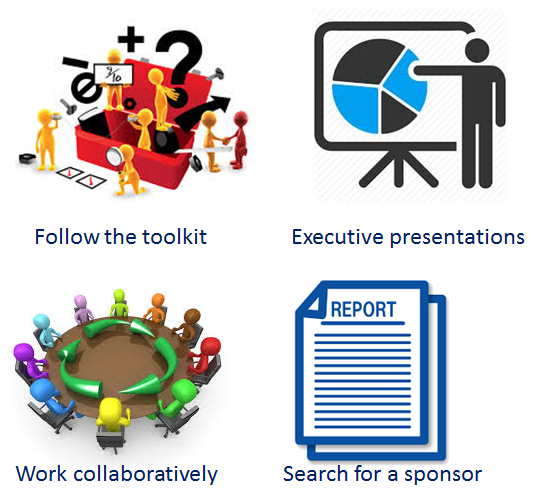Full toolkit: 7) Build the improvement plan
This step brings together all the collateral from the steps completed so far and combines it with the further activities necessary to make the right plan for your institution
Building and implementing the improvement plan will not be an easy task. Success will require changes across all four dimensions: people and culture, business process, data activities and technology. This change must also compete with other budgeted and approved projects and outputs embedded into the daily life of the organisation. For data to be a truly enterprise-wide asset, it must be viewed, treated and managed as such.
The value of increasing data capability is in realising benefits and meeting objectives which are underpinned by activities and plans. The existing risks and issues fix the current state and the gaps chart the journey to that end state.
To help order the material created so far we recommend you use the ‘themes’ and ‘dimensions’ developed as part of the process. This will ensure that the outputs of the process appeal to the widest range of stakeholders and interested parties. It may be useful to think of this activity as the creation of an Outline Business Case. if your organisation has templates for such a document we recommend the process output is fed directly into this.
Every plan will be different but should contain two sections; understanding the data asset and managing the data asset
Understanding the asset
This is your as-is state. Do not put an enormous amount of time into this activity. Only sufficient information is required to know what will be changed. The as-is state will be enriched by each interim state. The risks, issues and current level of maturity are a great starting point for presenting this state. The goal of any documentation should be for any reader to agree ‘this is where we are’ and – more importantly ‘I can see why we need to change’.
Managing the asset
This is your to-be and interim states. This is covered in more detail in the signposting section, but for clarity any model to improve our data asset should include; a data strategy, agreed data principles, a governance model with clear data ownership and accountability and some form of data literacy/data communication initiative. From here it is possible to derive data quality aspirations, single version of trust, meta and reference data management and a view on support required from technology platforms and tools.
Again, this should not be a weighty section. It is as much about showing the value of managing the asset for the benefit of the entire institution, as it is about the specific activities required to do so. These are long term plans and need to be considered as such. There is almost a zero chance of success of a project with a title of ‘implementing data governance’ for example. This is a true change management initiative.
When developing the plan, it’s vital to consider the audience(s). Different audiences will need different messages. Benefits to senior staff will not always resonate with those operating the data on a daily basis. The challenge is to show the value of the plan to as many people as possible. The questions you must always answer – to any audience – are ‘why do we need to change’, ‘how do we decide what to change’ and ‘how will we sustain the change’. Implementing the plan is covered in the final step.
Building the improvement plan should involve all of the following:

References
‘Senior management cut’ of the improvement plan (pdf)
Actions
- Use the toolkit and signposting to consider how to develop the plan
- Understand the minimum activity to create the ‘as-is’ state
- Understand the minimum activity to create the ’to-be’ state
- Create the minimum amount of documentation to show these states
- Build the plan between the as-is and to-be using gaps and mitigations
- Consider audiences for the plan and create appropriate documentation
- Go and see people! Make new friends. Create interest in the plan
